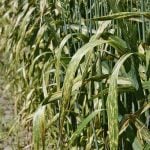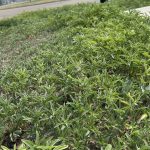Cabbage seedpod weevils are forcing more producers to spray this season.
The extra work is blamed on three factors:
- The insects’ rising population.
- Its easterly and northerly spread from southern Alberta.
- The increased value of the canola crop, which reduces the economic threshold for controlling the insect.
“There’s a lot of spraying going on south of the No. 1 Trans-Canada (Highway) in Alberta and southwestern Saskatchewan,” said Matt Stanford of the Canola Council of Canada.
Alberta entomologist Jim Tansey said the economic threshold used to be three to four insects per sweep. This season it’s two.
Read Also

VIDEO: Green Lightning and Nytro Ag win sustainability innovation award
Nytro Ag Corp and Green Lightning recieved an innovation award at Ag in Motion 2025 for the Green Lightning Nitrogen Machine, which converts atmospheric nitrogen into a plant-usable form.
Hector Carcamo of Agriculture Canada in Lethbridge said producers in a greater area of the Prairies should be examining their fields for the pest.
“There was talk of going to one weevil (beetle) as the threshold, but two was what was settled on.”
Tansey said it likely pays for producers to spray this year if they find weevil beetles in a single sweep.
“And most people are finding them in the southern regions, if they look,” he said.
Agrologists in southern Saskatchewan and Alberta are reporting four to 10 beetles per sweep on average this season.
The beetles can cause bud blasting from feeding, but yield damage is mostly caused by larvae growing inside the canola seedpods.
“The beetle chews a hole into the pod, lays eggs, then each larvae eats five to 10 seeds and chews its way out,” Tansey said.
The pods of seeds that the larvae don’t eat tend to shatter out when the crop matures. Carcamo said the weevil spreads at a rate of about 55 kilo-metres per year.
“These things are very good flyers,” he told producers attending the Southern Applied Research Association’s annual diagnostic field school in Lethbridge July 8.
“From the rate of spread we also know that they can invade your crop very quickly and from long distances.”
Tansey said because of this producers need to remain vigilant.
“If you don’t scout regularly then you might miss them. You need to start in the bud stage, which for most of you is already underway or passed. And you need to continue through the flowering period.”
He said weevils fly into most fields from other locations, which means trap crops can be an effective control method. Planting an earlier flowering Brassica rapa around the perimeter of a Brassica napus field and then spraying only the perimeter reduces costs and pesticide use.
Stanford said producers need to make strategies like this part of winter planning.
“At this point spraying is most effective when crops are 20 percent in flower,” he said. “You avoid egg laying in the new pods.”
Agrologists recommend spraying late in the day to reduce injury to beneficial insects such as bees.
















